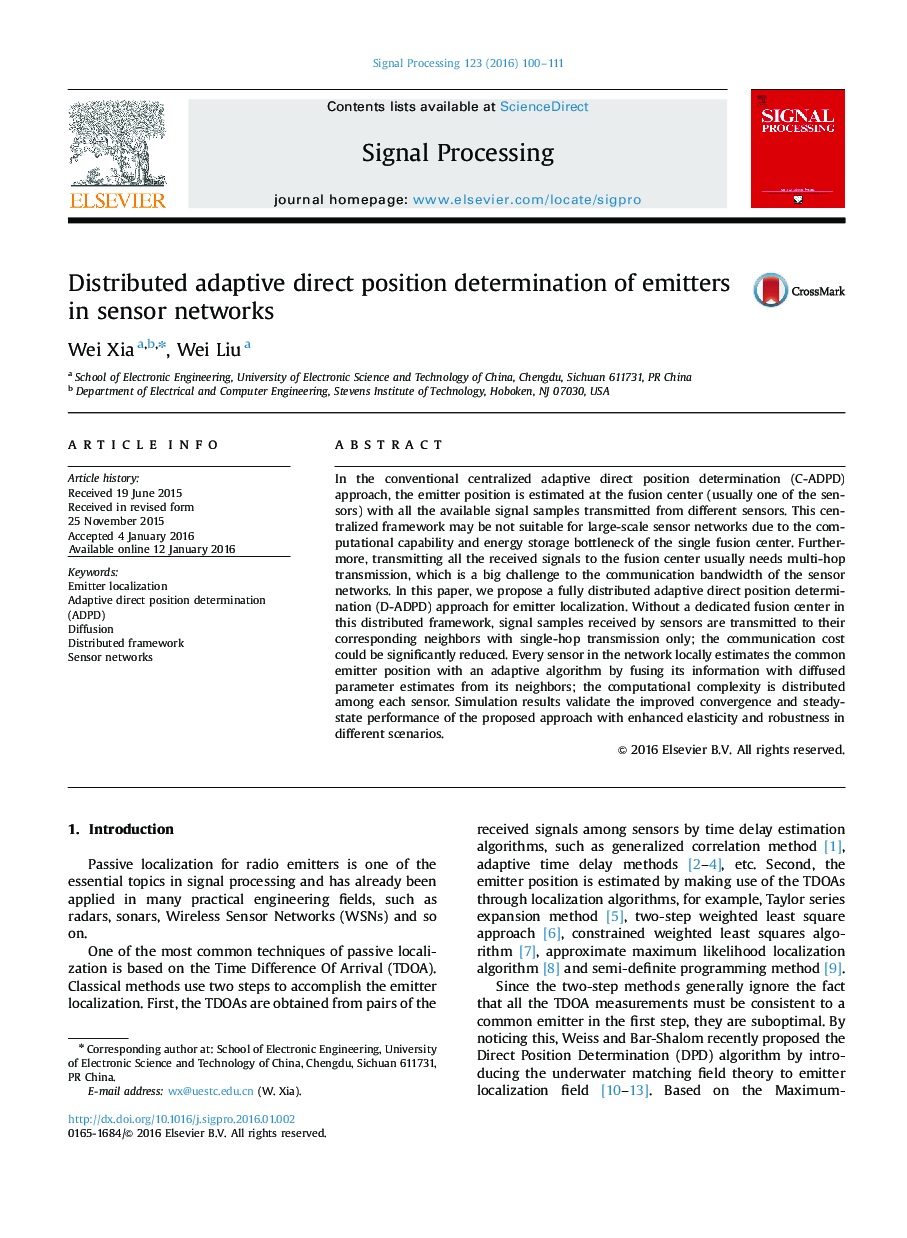| Article ID | Journal | Published Year | Pages | File Type |
|---|---|---|---|---|
| 562304 | Signal Processing | 2016 | 12 Pages |
•A distributed direct position determination (D-ADPD) algorithm is proposed.•Multi-hop transmission is avoided with the communication cost reduced.•Computation burden is distributed to every sensor in a balanced manner.•Localization performance is superior to that of the centralized counterparts.•It enjoys enhanced elasticity and robustness in different scenarios.
In the conventional centralized adaptive direct position determination (C-ADPD) approach, the emitter position is estimated at the fusion center (usually one of the sensors) with all the available signal samples transmitted from different sensors. This centralized framework may be not suitable for large-scale sensor networks due to the computational capability and energy storage bottleneck of the single fusion center. Furthermore, transmitting all the received signals to the fusion center usually needs multi-hop transmission, which is a big challenge to the communication bandwidth of the sensor networks. In this paper, we propose a fully distributed adaptive direct position determination (D-ADPD) approach for emitter localization. Without a dedicated fusion center in this distributed framework, signal samples received by sensors are transmitted to their corresponding neighbors with single-hop transmission only; the communication cost could be significantly reduced. Every sensor in the network locally estimates the common emitter position with an adaptive algorithm by fusing its information with diffused parameter estimates from its neighbors; the computational complexity is distributed among each sensor. Simulation results validate the improved convergence and steady-state performance of the proposed approach with enhanced elasticity and robustness in different scenarios.
